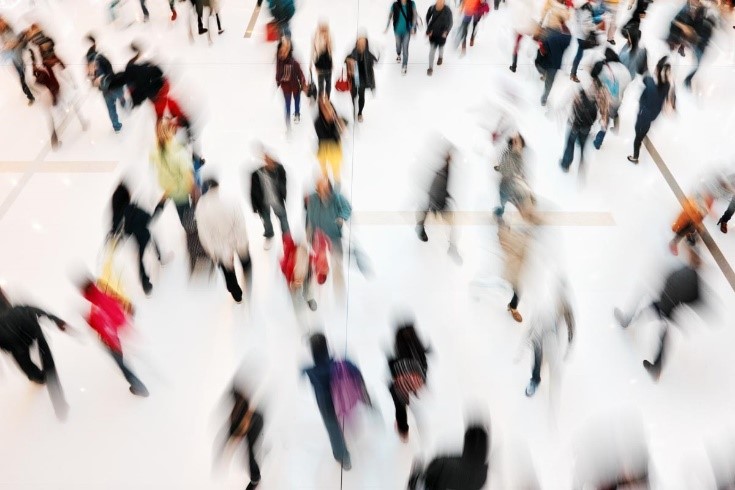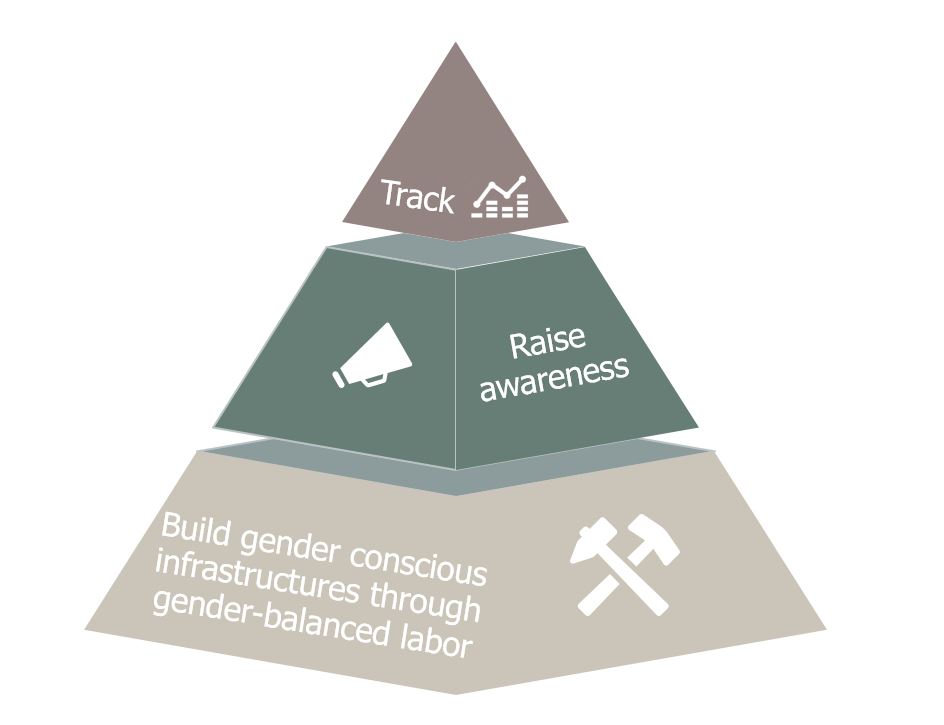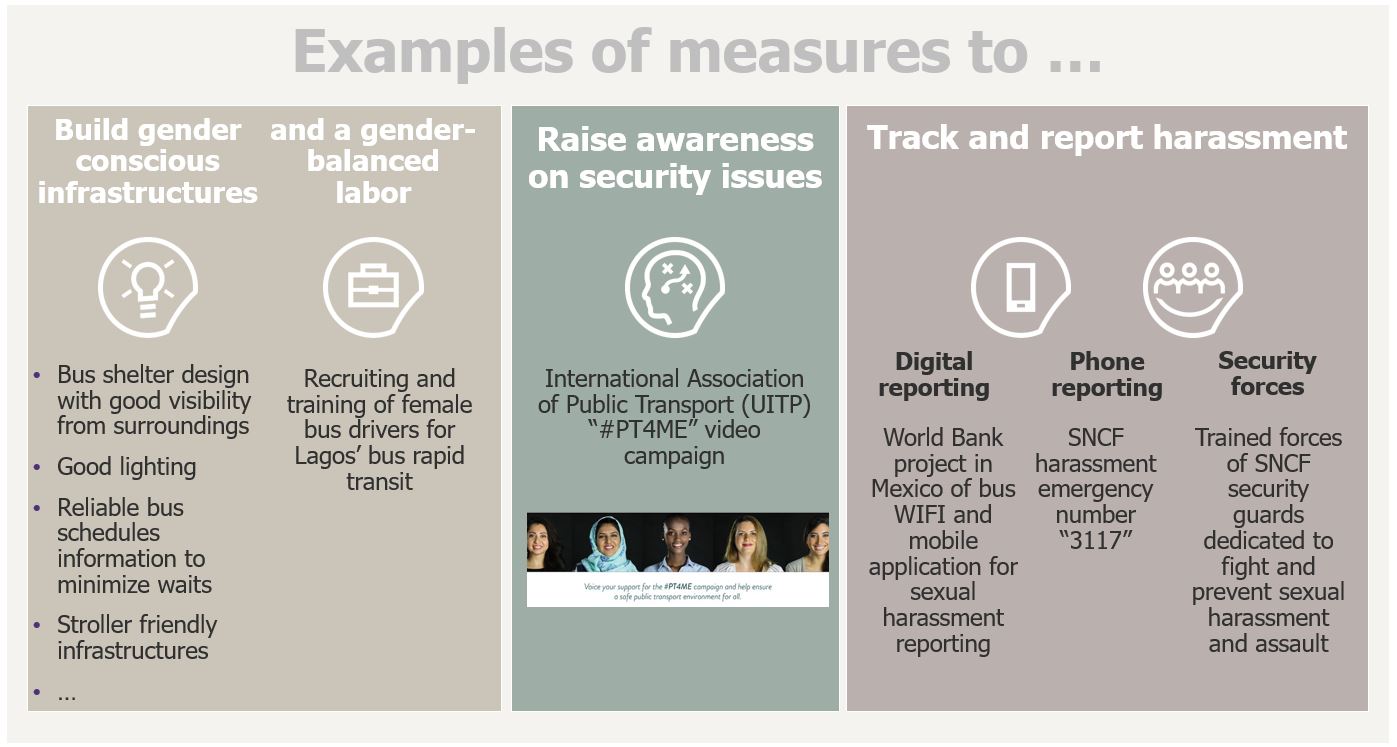Do women and men travel the same way? When considering gender equity, you may first think about the pay gap, role distribution or career choices. Recently though, street and transport harassment have received greater attention, unveiling that men and women may not have the same traveling perception. You may know as well that transports’ current ambition is to become more service-oriented, with stronger focus on the user experience. User-related questions are therefore also timely issues. In what sense do men and women travel differently? How can transport systems be a lever to improve gender equity in society as a whole?
Let’s briefly uncover some basics about gender and traveling differences.
What kind of gender differences are to be found in the transport sector?
The most famous issue regarding gender and transport is sexual harassment. Around the world figures are alarming. A study in Egypt (Cairo and Alexandria namely) reported in 2013 that 99 % of women surveyed had experienced one form or another of sexual harassment, with public transports and streets being the places where those most frequently happen. In Mumbai, India, a 2012 investigation showed that 80% of women faced sexual harassment in transport. The western world is also concerned. A 2012 survey in London showed that 43% of young women had experienced a kind of sexual harassment over the year 2011.

Besides physical and cognitive security impairments currently faced by female travelers, two further gender transport-related differences need to be noticed.
First, around the world, traveling patterns and mode choices are different whether you are a man or a woman. A 2017 study from 9 major cities around the world (Auckland, Dublin, Hanoi, Helsinki, Jakarta, Kuala Lumpur, Lisbon, and Manila) showed that women travel less often than men, make on average shorter trips, and between multiple destinations with mainly maintenance and care-giving purposes (shopping, child care). Even though their traveling patterns are more complex, women use public transport and taxis more often than individual cars. In the study, gender was found to be a very robust determinant of transport mode choice, more influential than age or income. Several factors have indeed historically limited women’s mobility, such as lower financial resources than men and socio-cultural norms shaping the traditional role distribution: public/private; breadwinner/homemaker; mobile/static.
Secondly, the transport workforce is male-dominated. From transport planners to bus drivers, it is mainly men that are designing and running transport systems around the world. In the EU, women account to only 22% of transport workers. Public transport users are predominantly women, and yet are underrepresented in the public transport workforce.
Why does it matter?
There is obviously a moral argument in making transport systems safe for all, and caring about carving transport to meet the users’ need.
Beyond the equity scope, there is also a strong economic argument in having women around the world traveling safely and efficiently. Advancing women’s equality can indeed add $12 trillion, or 11%, in global 2025 GDP. A “full potential” gender equity scenario could go even higher by adding $28 trillion, or 26% in global 2025 GDP. Closing the gender gap at work in our society goes however hand in hand with getting women to work efficiently and safely. In developing countries safety and limited access to transport has been estimated as the greatest obstacle to women’s involvement in workforce. This brings down their labor market participation probability by 16.5%, which represents a stronger impact than the lack of affordable childcare or higher education for example.

Women’s empowerment through accessibility increase represents a great economic opportunity globally.
Transport systems are therefore an important lever for growth and gender equity around the world.
Steps towards a more gender-neutral transport system
Building a gender-neutral transport system requires a comprehensive approach. It includes three fundamental actions:
- Tracking and reporting: Since “what gets measured gets done”, tracking harassment and reporting differences in the way men and women travel will unlock further work on the issue
- Raising awareness: Raising awareness is a central action to inform and change large-scale latent cultural norms
- Building gender conscious infrastructures through a gender-balanced labor: Building woman-friendly transport infrastructures includes generic measures such as good lighting, and specific ones to understand regional traveling patterns and accessibility needs. This requires involving women at all scales of the transport workforce, especially in the decision-making and transport design phases.

Examples of initiatives around the world in the three categories are presented in the table below.

Sources:
Advancing the safety of women in public transport: UITP launches #PM4ME campaign
World Bank Transforming Transportation forum 2018
SNCF for Safety and Security for Women in Transport
New mobilities will need to include findings about gender differences in traveling. As women overall prefer public transports, which are cheaper and do not require driving skills, shared mobility or mobility as a service could be more appealing to female than male users. Even more so for individual autonomous vehicle units such as low cost autonomous taxis, predicted to be highly attractive for women, as a flexible, easy, low cost and safe transport option. If all women were to shift from public transport to individual autonomous vehicles, road congestion would nevertheless drastically toughen. Shared transport is very efficient in limiting the heavy toil of road congestion, and making shared vehicles safe for all users stays on the top of the agenda for future mobilities.
